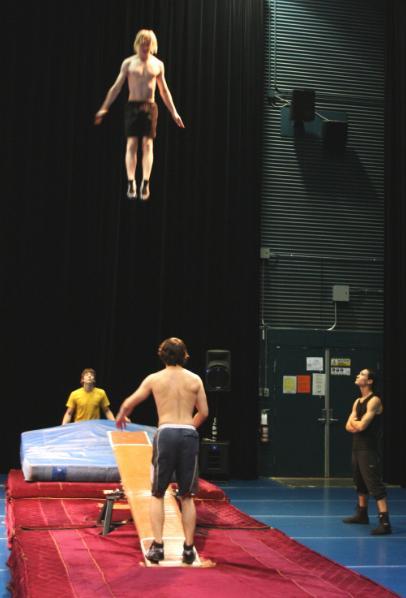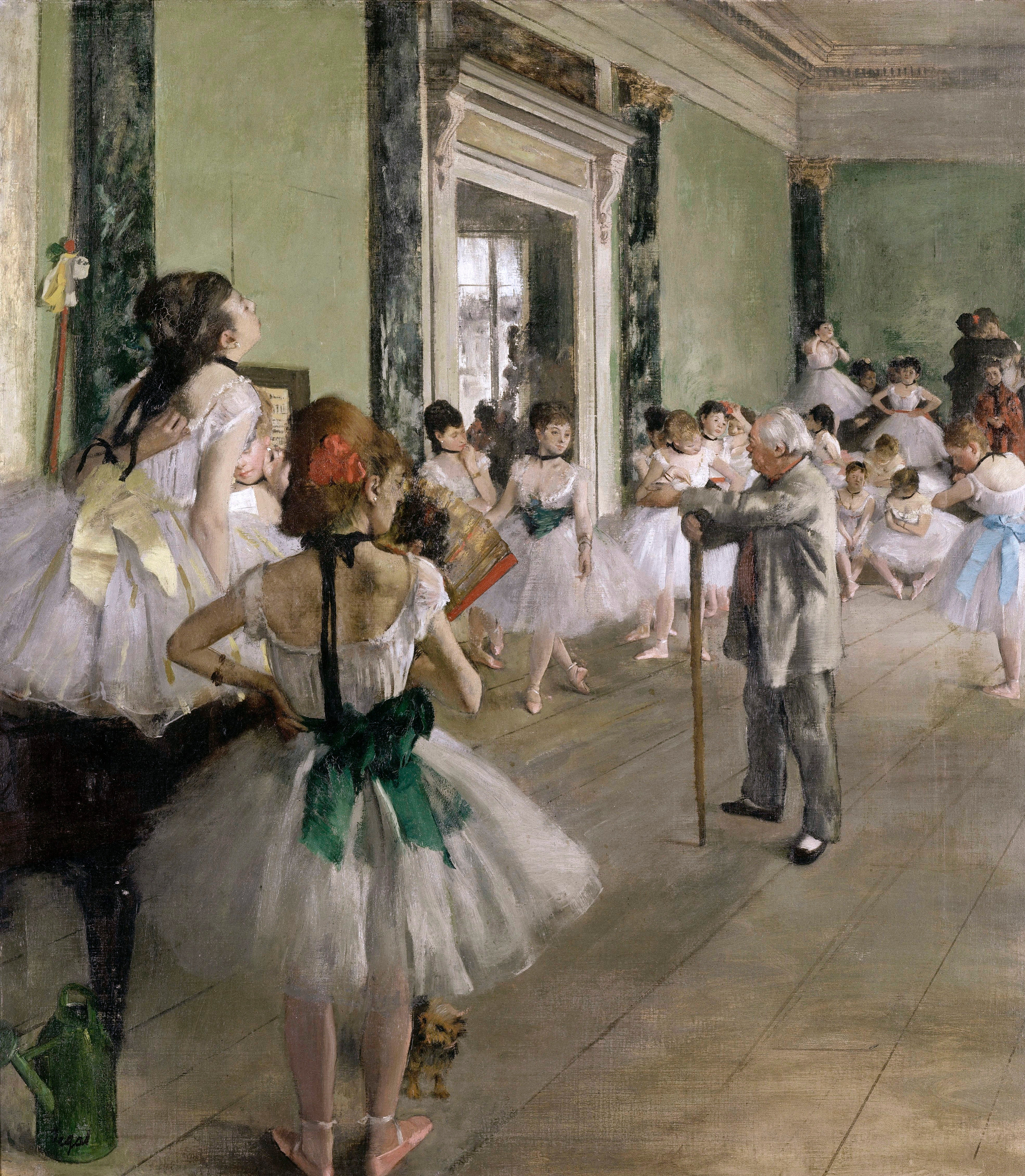|
Dralion
''Dralion'' (pronounced Drah-lee-on) was a touring production by the Canadian entertainment company Cirque du Soleil. The show combined elements of traditional Chinese variety art, Chinese circus with Western contemporary circus, complementing the "East-meets-West" theme implied in the title—the name is a portmanteau of "dragon" (representing the East) and "lion" (representing the West). It is Cirque du Soleil's twelfth touring production and the first Cirque show since 1985 not to be directed by Franco Dragone. ''Dralion'' performed its final show at the Sullivan Arena in Anchorage, Alaska on January 18, 2015, bringing its fifteen-year world tour to a close. Set and technical information The backdrop for ''Dralion'' was a metallic structure in width and in height. It was covered in perforated aluminum tiles, giving it the appearance of medieval armor or a futuristic Chinese temple. Sitting atop the structure were six giant claws which allow performers to climb the wall ... [...More Info...] [...Related Items...] OR: [Wikipedia] [Google] [Baidu] |
Cirque Du Soleil
Cirque du Soleil (, ; ) is a Canadian entertainment company and the largest contemporary circus producer in the world. Located in the inner-city area of Saint-Michel, Montreal, Saint-Michel, Montreal, it was founded in Baie-Saint-Paul on 16 June 1984 by former street performers Guy Laliberté and Gilles Ste-Croix. Originating as a performing troupe called ''Les Échassiers'' (; "The Stilt Walkers"), they toured Quebec in various forms between 1979 and 1983. Their initial financial hardship was relieved in 1983 by a government grant from the Canada Council for the Arts to perform as part of the 450th anniversary celebrations of Jacques Cartier's voyage to Canada. Their first official production ''Le Grand Tour du Cirque du Soleil'' was a success in 1984, and after securing a second year of funding, Laliberté hired Guy Caron from the École nationale de cirque, National Circus School to recreate it as a "proper circus". Its theatrical, character-driven approach and the absence of ... [...More Info...] [...Related Items...] OR: [Wikipedia] [Google] [Baidu] |
Varekai
Varekai was a Cirque du Soleil touring production that premiered in Montréal in April 2002. Its title means "wherever" in the Romani language, and the show is an "acrobatic tribute to the nomadic soul". The show begins with the Greek myth of Icarus, picking up where the myth leaves off, reimagining the story of what happened to Icarus after he flew too close to the sun and fell from the sky. In ''Varekai'', rather than drowning in the sea below him, Icarus lands in a lush forest full of exotic creatures. Set and technical information The set, created by Stéphane Roy, includes four major components: the forest, stage, catwalk, and lookout. The forest consists of 330 "trees", of which around 20 are climbable. The trees range from to in height. The stage is in diameter and has five trap doors, two turntables, and one elevating platform. The catwalk is in length and allows performers to cross over the stage; it ends at a lookout which is . Cast and crew Approximately 95 ... [...More Info...] [...Related Items...] OR: [Wikipedia] [Google] [Baidu] |
Contemporary Circus
Contemporary circus (or ''cirque contemporain'' in French-speaking countries) is a contested term in circus studies. In this article, it is used in contrast to the term 'traditional circus', combining with the genre elsewhere disambiguated as new circus or ''nouveau cirque''. Many circus scholars prefer to separate these styles, as elaborated in circus. Contemporary circus, by this definition, is a genre of performing arts developed in the late 20th century in which a story, theme, mood or question is conveyed through traditional circus skills. Traditional circus skills are blended with more choreographic, character-driven or mechanical approaches. Animals are rarely used, akin to variety shows. Contemporary circus —encompassing the New Circus movement—originated in the late 1960s, and has spurred the creation of unique schools to teach the format, as well as books for the contemporary circus performer, assisting them with their careers. Contemporary circus The new ... [...More Info...] [...Related Items...] OR: [Wikipedia] [Google] [Baidu] |
Luc Lafortune
Luc Lafortune (born September 1958) is a Canadian lighting designer for the entertainment industry as well as one of the original designers of the Cirque du Soleil. Career Lafortune studied at Dawson College, and then McGill University, where he obtained a bachelor's degree in Arts. He later obtained a bachelor's degree in Fine Arts from Concordia University (Quebec), Concordia University. Upon graduation, he went to work for Cirque du Soleil, embarking on their first tour, ''Le Grand Tour'', a 13-week stint across rural Quebec, organized in conjunction with the celebrations marking the 450th anniversary of the discovery of Canada by French explorer, Jacques Cartier. Since then, Lafortune has designed numerous Cirque du Soleil shows, including "Le Cirque Réinventé (We Reinvent the Circus)'', ''Cirque du Soleil#Saltimbanco, Fascination'', ''Nouvelle Expérience'', ''Saltimbanco'', ''Mystère (Cirque du Soleil), Mystère'', ''Alegría (Cirque du Soleil), Alegría'', ''Quidam' ... [...More Info...] [...Related Items...] OR: [Wikipedia] [Google] [Baidu] |
La Nouba
''La Nouba'' was a Cirque du Soleil show that ran for 19 years in a custom-built, freestanding theater at Disney Springs' West Side at the Walt Disney World Resort in Lake Buena Vista, Florida. It was a contemporary circus performance featuring acrobats, gymnasts, and other skilled performers. The show's creation was directed by Franco Dragone, who also directed many of Cirque du Soleil's earlier shows. Its title derives from the French phrase ''faire la nouba'', meaning "to party" or "to live it up". The show was succeeded by '' Drawn to Life'', which premiered on November 18, 2021. History On December 23, 1998, the entertainment company Cirque du Soleil premiered a contemporary circus production, ''La Nouba'', in a new theater custom-designed and built for Cirque du Soleil in Downtown Disney (later renamed Disney Springs) at the Walt Disney World Resort. With an international cast of 67 artists, the show welcomed more than 1,650 spectators ten times a week. The show was ... [...More Info...] [...Related Items...] OR: [Wikipedia] [Google] [Baidu] |
Teeterboard
The teeterboard or Korean plank is an acrobatic apparatus that resembles a playground seesaw. The strongest teeterboards are made of oak (usually 9 feet in length). The board is divided in the middle by a fulcrum made of welded steel. At each end of the board is a square padded area, where a performer stands on an incline before being catapulted into the air. The well-trained flyer performs various aerial somersaults, landing on padded mats, a human pyramid, a specialized landing chair, stilts, or even a Russian bar. The teeterboard is operated by a team of flyers, catchers, spotters and pushers. Some members of the team perform more than one acrobatic role. In the early 1960s the finest teeterboard acts, trained in the Eastern Bloc countries, performed with Ringling Brothers and Barnum & Bailey Circus. Korean-style teeterboard called Neolttwigi is a form of teeterboard where two performers jump vertically in place, landing back on the apparatus instead of dismounting onto ... [...More Info...] [...Related Items...] OR: [Wikipedia] [Google] [Baidu] |
Ovo (Cirque Du Soleil)
''oVo'' is a touring circus production by Cirque du Soleil that premiered in Montréal, Canada in 2009. ''oVo''s creator and director, Deborah Colker, took inspiration from the world of insects. The idea for ''oVo'' was not to be about the acts, nor dancing, nor insects, but about movement. The movement of life permeates the entire show, with creatures flying, leaping, bounding, and crawling. Composer Berna Ceppas brought additional life to ''Ovo'' with a score inspired by the music of Brazil. ''Ovo'' means "egg" in Portuguese and represents the underlying thread of the show. Graphically, inside the logo of ''Ovo'', is an insect. The two O's represent the eyes and the V forms the nose and antennas. Set and technical information The stage and set for ''Ovo'' were designed by Gringo Cardia and utilize irregular shapes throughout. The rear wall is wide by high and is only supported at the sides, thus allowing the trampolines for the final act to slide into place. During i ... [...More Info...] [...Related Items...] OR: [Wikipedia] [Google] [Baidu] |
Diabolo
The diabolo ( ; commonly misspelled ''diablo'') is a juggling or circus skills, circus juggling prop, prop consisting of an axle () and two cone, cups (hourglass/egg timer shaped) or cylinder, discs derived from the Chinese yo-yo. This object is rotation, spun using a twine, string attached to two hand sticks ("batons" or "wands"). A large variety of tricks is possible with the diabolo, including toss (juggling), tosses, and various types of interaction with the sticks, string, and various parts of the user's body. Multiple diabolos can be spun on a single string. Like the Western yo-yo (which has an independent origin), it maintains its spinning motion through a rotating effect based on Angular momentum#Conservation of angular momentum, conservation of angular momentum. History Origin The Diabolo is derived from the Chinese yo-yo encountered by Europeans during the colonial era. However, the origin of the Chinese yo-yo is unknown. The earliest mention of the Chinese yo-yo ... [...More Info...] [...Related Items...] OR: [Wikipedia] [Google] [Baidu] |
Ballet
Ballet () is a type of performance dance that originated during the Italian Renaissance in the fifteenth century and later developed into a concert dance form in France and Russia. It has since become a widespread and highly technical form of dance with Glossary of ballet, its own vocabulary. Ballet has been influential globally and has defined the foundational ballet technique, techniques which are used in many other dance genres and cultures. Various schools around the world have incorporated their own cultures. As a result, ballet has evolved in distinct ways. A ''ballet'' as a unified work of art, work comprises the choreography (dance), choreography and music for a ballet production. Ballets are choreographed and performed by trained ballet dancers. Traditional classical ballets are usually performed with classical music accompaniment and use elaborate costumes and staging, whereas modern ballets are often performed in simple costumes and without elaborate sets or scenery ... [...More Info...] [...Related Items...] OR: [Wikipedia] [Google] [Baidu] |
Lightbulbs
Electric light is an artificial light source powered by electricity. Electric Light may also refer to: * Light fixture, a decorative enclosure for an electric light source * ''Electric Light'' (album), a 2018 album by James Bay * Electric Light (poetry) ''Electric Light'' (Faber and Faber, 2001, ) is a poetry collection by Seamus Heaney, who received the 1995 Nobel Prize in Literature. The collection explores childhood, nature, and poetry itself. Part one presents translations and adaptations, o ..., a poetry collection by Irish poet Seamus Heaney, 2001 * "Electric Light" (song), a 2008 song by Infernal {{disambig ... [...More Info...] [...Related Items...] OR: [Wikipedia] [Google] [Baidu] |
Medusa
In Greek mythology, Medusa (; ), also called Gorgo () or the Gorgon, was one of the three Gorgons. Medusa is generally described as a woman with living snakes in place of hair; her appearance was so hideous that anyone who looked upon her was Petrifaction in mythology and fiction, turned to stone. Medusa and her Gorgon sisters Euryale and Stheno were usually described as daughters of Phorcys and Ceto; of the three, only Medusa was mortal. Medusa was beheaded by the Greek hero Perseus, who then used her head, which retained its ability to turn onlookers to stone, as a weapon until he gave it to the goddess Athena to place on her Aegis, shield. In classical antiquity, the image of the head of Medusa appeared in the apotropaic magic, evil-averting device known as the ''Gorgoneion''. According to Hesiod and Aeschylus, she lived and died on Sarpedon, somewhere near Cisthene (Mysia), Cisthene. The 2nd-century BC novelist Dionysios Skytobrachion puts her somewhere in Ancient Libya, ... [...More Info...] [...Related Items...] OR: [Wikipedia] [Google] [Baidu] |




